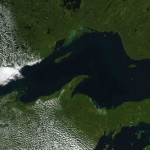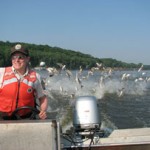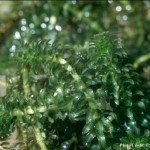A binational group of Great Lakes scientists and policy experts advising the U.S. and Canadian governments about the Great Lakes met in Windsor in early October. This special report encompasses some of the issues they discussed

Oct. 8, 2009
The U.S. Coast Guard considers new rules to regulate ballast to slow the spread of invasive species in the Great Lakes.

Oct. 7, 2009
Global warming could spur algae growth in Lake Superior. Excessive plant growth leading to low oxygen is a problem cold Lake Superior has been spared. But what will happen as global warming also raises the lake’s temperature?

Oct. 6, 2009
U.S./Canadian commission examines inconsistent water quality monitoring: More than 20,000 beaches closed last year when water samples tested positive for harmful bacteria. But inconsistent sampling methods have Great Lakes officials questioning those results.

Oct. 5, 2009
International Joint Commission flags inconsistent U.S./Canadian regulation of fire retardant linked to health concerns: An international commission that advises policymakers on Great Lakes environmental issues is questioning why the U.S. is making a fire retardant that Canada has banned.

Oct. 2, 2009
Physical barrier, rapid response to fight Great Lakes invasive species may be years away: Two approaches to keep ravenous carp and other invasive species out of Lake Michigan are gaining ground, but both could be years from completion.

Oct. 1, 2009
Great Lakes biologists brace for hydrilla, the next big invasive water weed: When Matt Preisser thought he saw a photo of a potential Great Lakes invasive species in a Michigan newspaper, he tracked it down and checked it out.